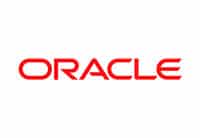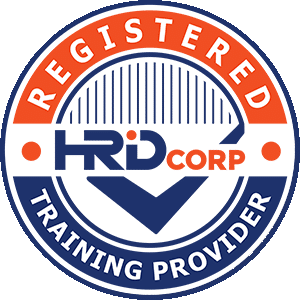Overview
This Oracle BI Publisher 12c training teaches you the fundamental concepts of Oracle BI Publisher, a reporting & document output management solution. Develop skills and design reports by using components such as Data Model, Report and Layout Editors. This course will help you to learn how to create layouts for reports, then publish the highly formatted reports to a wide range of destinations (printers, faxes, email, and document repositories via FTP or WebDAV). Publisher’s report formats can also be designed by using familiar Microsoft Office tools like Microsoft Word and Excel.
Skills Covered
- Create data models by using the Data Model Editor.
- Create BI Publisher reports based on data models.
- Create report layouts by using the Layout Editor (online).
- Create reports based on OBI EE data sources.
- Publish the reports on OBI EE Dashboards.
- Schedule reports and burst these reports.
Who Should Attend
- Analyst
- Developer
- End User
- Implementer
Course Curriculum
Course Modules
Agenda 1-2
Introductions 1-3
Training Site Information 1-4
Audience 1-5
Course Goal 1-6
Course Objectives 1-7
Methodology 1-9
Schedule 1-10
Objectives 2-2
Oracle BI Foundation Suite: Overview 2-3
Oracle BI EE 12c: Overview 2-4
Functions of Reporting Systems 2-5
Report Challenges 2-6
Reporting Challenges: Diverse Business Document Requirements 2-7
Reporting Challenges: Complex Infrastructure 2-8
Reporting Challenges: Classic Reporting Tools Paradigm 2-9
Oracle BI Publisher Paradigm: Introduction 2-10
End-to-End View of BI Publisher 2-11
Availability of BI Publisher 2-12
Oracle BI Publisher Trial Edition 2-13
BI Publisher as a Strategic Reporting Solution For All Oracle Applications 2-14
BI Publisher in Oracle Applications 2-15
BI Publisher on Oracle Exalytics In-Memory Machine 2-18
Key Features and Benefits of BI Publisher 2-19
Quiz: Overview 2-21
Quiz 2-22
Summary 2-24
Practice 2: Overview 2-25
Objectives 3-2
Revisiting BI Publisher 3-3
BI Publisher Functional Components 3-4
BI Publisher Layout Templates 3-6
BI Publisher Multitier Architecture 3-7
BI Publisher Enterprise Server Architecture 3-8
BI Publisher Document Generation Process 3-9
BI Publisher Supported Data Sources 3-11
BI Publisher Underlying Technology 3-12
BI Publisher Bursting: Overview 3-13
Downloading Government Forms 3-14
Performance and Scalability 3-15
Internationalization and Language Support 3-16
BI Publisher Output Formats 3-17
Quiz: Overview 3-18
Quiz 3-19
Summary 3-21
Practice 3: Overview 3-22
Objectives 4-2
Logging In to BI Publisher 4-3
BI Publisher Home Page 4-4
BI Publisher Global Header 4-6
Setting Account Preferences 4-8
Browsing the Catalog 4-10
BI Publisher Repository Object Types 4-11
Viewing Reports 4-13
Managing Repository Objects 4-14
Managing Favorites 4-16
Creating Reports: Overview 4-17
Launching the Report Wizard 4-18
Step 1 – Select Data 4-19
Step 1 – Options: Use Data Model 4-20
Step 1 – Options: Upload Spreadsheet 4-21
Step 1 – Options: Use Subject Area 4-22
Creating a Report Using the Guide Me Workflow 4-23
Step 2 – Select Layout 4-24
Steps 3 and 4 – Create Chart 4-25
Step 5 – Create Pivot Table 4-26
Step 5 – Create Table 4-27
Step 6 – Save Report 4-28
Step 7 – View Report 4-29
Editing the Report Layout 4-30
Configuring Layout and Report Properties 4-31
Configuring Layouts 4-32
Configuring Layouts: The Layout Toolbar 4-33
Setting Report Properties 4-34
Setting Report Properties: General 4-35
Setting Report Properties: Caching 4-37
Setting Report Properties: Formatting 4-38
Setting Report Properties: Font Mapping and Currency 4-39
Configuring Report Parameters in the Report Editor 4-40
Quiz: Overview 4-41
Quiz 4-42
Summary 4-45
Practice 4: Overview 4-46
Objectives 5-2
Sample Lite: Introduction 5-3
Sample Schemas: Introduction 5-4
Sample Schemas: HR Data Model 5-5
Sample Schemas: OE Data Model 5-6
Data Model Editor: Introduction 5-7
Examining Data Model Properties 5-9
Supported Data Sources 5-11
Private Data Sources: Overview 5-13
Creating a Private Data Source 5-14
Creating a Simple Data Model Based on a SQL Query Data Set 5-17
Step1: Defining Default Data Source and Output Options 5-18
Step 2: Adding a SQL Query Data Set 5-19
Step 3: Building a Query in Query Builder 5-20
Step 3: Building a Query in Query Builder: Select Objects 5-21
Step 3: Building a Query in Query Builder: Define Relations 5-22
Step 3: Building a Query in Query Builder: Select Columns 5-23
Step 3: Building a Query in Query Builder: Add Aliases and Conditions 5-24
Step 3: Building a Query in Query Builder: View Results and Save Query 5-26
Step 4: Saving the Data Model 5-27
Step 5: Viewing Output and Saving Sample Data 5-28
Step 5: Saving Sample Data and Exporting 5-29
Creating a Report from Data Model Editor 5-30
Describing Parameters and LOVs 5-31
Adding Parameters 5-32
Adding LOVs: SQL Query Type 5-33
Additional Examples of Parameters 5-34
Adding a Bind Variable to a Query 5-36
Configuring Parameter Settings for a Report 5-38
Viewing a Report with Parameters 5-40
Adding LOVs: Fixed Type 5-44
Cascading Parameters 5-45
Quiz: Overview 5-46
Quiz 5-47
Summary 5-51
Practice 5: Overview 5-52
Objectives 6-2
Revisiting Layout Editor 6-3
Opening Layout Editor 6-4
Selecting a Predefined Template 6-6
Layout Editor Interface 6-7
Navigating the Layout Editor Interface 6-8
Creating a Layout by Using a Basic Template 6-10
Inserting a Layout Grid 6-12
Working with Data Tables 6-14
Inserting a Data Table 6-15
Adding Data Fields 6-16
Table Tab and Dynamic Table Menus 6-17
Formatting Data in a Table 6-18
Adding Number and Date Formats 6-19
Defining Groups and Subtotals 6-20
Defining Sorts 6-21
Applying Conditional Formats 6-22
Defining a Table Filter 6-24
Working with Charts 6-26
Inserting a Chart 6-27
Adding Data Fields to a Chart 6-28
Editing Charts 6-29
Editing Charts: Additional Tasks 6-30
Practices 6-1 and 6-2: Overview 6-32
Working with Repeating Sections 6-33
Working with Text Items and Images 6-35
Working with Lists 6-37
Working with Gauges 6-38
Working with Page Layout Features 6-39
Saving a Layout 6-42
Practice 6-3: Overview 6-43
Advanced Features 6-44
Working with Pivot Tables 6-45
Creating Boilerplates: Predefined Layouts 6-46
Quiz: Overview 6-47
Quiz 6-48
Summary 6-51
Practices 6-4 and 6-5: Overview 6-52
Objectives 7-2
Template Builder: Introduction 7-3
Installing Template Builder 7-4
Exploring the Template Builder Interface 7-5
BI Publisher Menus: Load Data 7-6
BI Publisher Menus: Insert 7-7
BI Publisher Menus: Preview and Tools 7-9
BI Publisher Menus: Options 7-11
Explaining the Relationship Between RTF and XML 7-13
Creating an RTF Template Using Sample XML Data 7-15
Step 1: Creating an RTF Template from a Sample Layout 7-16
Step 2: Loading the Sample XML Data 7-17
Step 3: Inserting Fields 7-18
Step 4: Previewing Data 7-19
Step 5: Inserting a Table 7-20
Step 6: Viewing the Results 7-23
Changing Field Properties 7-24
Previewing the Table Data 7-25
Practices 7-1: Overview 7-26
BI Publisher Charts 7-27
Adding a Chart to an RTF Template 7-28
Step 1: Use Template Builder to Insert a Chart 7-29
Step 2: Define a Chart 7-31
Step 3: Preview the Chart 7-32
Examining Pivot Table Support in Template Builder 7-33
Examining Pivot Table Support in Template Builder: Results 7-34
Practice 7-2: Overview 7-35
Designing an RTF Template in Online Mode 7-36
Step 1: Log On to BI Publisher 7-37
Step 2: Opening the BI Publisher Report 7-38
Step 3a: Defining the RTF Template: Add a Table 7-39
Step 3b: Defining the RTF Template: Add a Chart 7-42
Step 4: Previewing the Data by Using the Template 7-43
Step 5: Uploading the Template and Viewing Layout 7-44
Supported MS Word Native Formatting Features 7-45
Creating a New Report on BI Publisher Server Using Template Builder 7-46
Describing the Methods for Creating RTF Templates 7-47
Exploring the Basic Method: Example 7-48
Exploring the Form Field Method: Example – Form Fields in RTF Templates 7-49
Exploring the Form Field Method: Example – Insert a Field 7-50
Exploring the Form Field Method: Example – Insert a Table 7-51
Exploring the Form Field Method: Example – Completed Template 7-53
Exploring the Form Field Method: Example – Previewing the Report 7-54
Exploring Advanced RTF Template Techniques 7-55
Performing Grouping in the Table Wizard 7-56
Performing Sorting in the Table Wizard 7-57
Adding Running Totals in the Table Wizard 7-58
Adding Page and Section Breaks in the Table Wizard 7-59
Practice 7-3: Overview 7-60
Adding Page Numbers 7-61
Formatting Dates 7-62
Formatting Numbers 7-64
Applying Conditional Formats 7-66
Applying Conditional Formats: Results 7-67
Creating a Conditional Region 7-68
Adding Page-Level Calculations 7-69
Brought-Forward and Carried-Forward Totals 7-71
Adding Backgrounds and Watermarks 7-73
Drawings and Shapes 7-74
Practices 7-4 and 7-5: Overview 7-75
Introducing Excel Templates 7-76
Excel Template Builder 7-77
Examining a Sample Excel Template 7-79
Quiz: Overview 7-80
Quiz 7-81
Summary 7-87
Objectives 8-2
Administration Page 8-3
Data Sources 8-4
Setting Data Sources: JDBC 8-5
Defining a JDBC Connection 8-6
Setting Data Sources: JNDI 8-8
Setting Data Sources: Files 8-9
Setting Data Sources: LDAP 8-10
Setting Data Sources: OLAP 8-11
Setting Data Sources: Webservice 8-12
Setting Data Sources: HTTP 8-14
Viewing or Updating a Data Source 8-15
BI Publisher Security Model: Security Center 8-16
BI Publisher: Supported Security Models 8-17
BI Publisher: Security Configuration 8-18
Fusion Middleware Security for BI Publisher: Default User 8-19
Fusion Middleware Security for BI Publisher: Default Users 8-20
Default Users: BISystemUser Account 8-21
Administration Configurations by Using BISystemUser Account 8-22
Fusion Middleware Security: Default Roles 8-23
Fusion Middleware Security: Default Publisher Permissions by Default Role 8-24
Fusion Middleware Security: BIServiceAdministrator Role 8-25
Fusion Middleware Security: BIContentAuthor Role 8-26
Fusion Middleware Security: BIConsumer Role 8-27
BI Publisher Roles and Permissions 8-28
BI Publisher Folder Permissions 8-29
BI Publisher Report Object Permissions 8-30
Digital Signature: Overview 8-31
Registering a Digital Signature 8-32
Practice 8-1 and 8-2: Overview 8-33
Delivery Options 8-34
Delivery: Delivery Configuration 8-35
Delivery: Print or Fax 8-36
Delivery: Printing PDF 8-37
Delivery: Email 8-38
Delivery: WebDAV 8-39
Delivery: HTTP Server 8-40
Delivery: FTP Server 8-41
Delivery: Content Server 8-42
Delivery: CUPS Server 8-44
System Maintenance: Architecture Overview of Scheduling 8-45
BI Publisher Scheduler Process Flow 8-46
System Maintenance: Scheduling — Clustering Example 8-48
Scheduler Configuration: Overview 8-49
Scheduler Diagnostics: Overview 8-50
Report Viewer Configuration: Overview 8-52
Manage Cache 8-53
Runtime Configuration: Overview 8-54
Setting Runtime Properties 8-55
Setting Runtime Properties PDF/A and PDF/X Output 8-56
Defining Font Mappings 8-57
Creating a Font Mapping 8-58
Defining Currency Formats 8-59
Integrating with Oracle BI Presentation Services: Overview 8-60
Quiz: Overview 8-61
Quiz 8-62
Practice 8-3: Overview 8-70
Summary 8-71
Objectives 9-2
Scheduling BI Publisher Reports 9-3
Schedule Report Job: Overview 9-4
General Options Tab 9-5
Output Options Tab 9-6
Schedule Options Tab 9-7
Notification Options Tab 9-8
Diagnostic Tab 9-9
Submitting the Job and Reviewing the Confirmation Details 9-10
Manage Report Jobs: Overview 9-11
Manage Report Jobs: Editing a Report Job 9-12
Report Job History: Overview 9-15
Report Job History: Details 9-17
Downloading and Republishing 9-18
Sending the Output to a New Destination 9-19
Scheduling a Report with Trigger: Overview 9-20
Setting a Schedule Trigger 9-21
Reviewing the Data Model That Contains the Trigger 9-22
Creating a Job That Uses a Trigger 9-23
Choosing the Trigger and Submitting the Job 9-24
Opening Job Histories 9-25
Bursting a Report 9-26
Bursting: Key Concepts 9-27
Adding a Bursting Definition 9-28
Enabling a Report to Use a Bursting Definition 9-29
Scheduling a Bursting Job 9-30
Viewing Report Job History After Bursting 9-31
Viewing Job History Details After Bursting 9-32
Quiz 9-33
Summary 9-39
Practice 9: Overview 9-40
Objectives 10-2
Revisiting the BI Foundation Suite Model 10-3
Oracle BI Publisher and Oracle BI EE Integration 10-4
Configuring a JDBC Connection to BI Server 10-5
Configuring Presentation Catalog Integration 10-6
Configuring Presentation Services Integration 10-7
Navigating Oracle BI EE 10-8
Creating Objects from the Global Header 10-10
Reporting Against Oracle BI EE’s Common Metadata Layer Using BI
Publisher 10-11
Creating a Report Based on a BI EE Subject Area 10-12
Creating a Report Based on BI EE Subject Area 10-13
Creating a Report Based on a BI EE Subject Area 10-14
Viewing a Report Based on a BI EE Subject Area 10-17
Adding Parameters to BI EE Subject Area Reports 10-18
Viewing BI EE Subject Area Reports with Parameters 10-21
Creating a Data Model and Report Based on a BI Server SQL Query: Process
Overview 10-22
Step 1: Adding a SQL Query Data Set 10-23
Step 2: Selecting the Objects for the Query 10-24
Step 3: Viewing the Results and Saving the Query 10-26
Creating a Data Model and Report Based on an Oracle BI Analysis 10-27
Step 1: Adding an Oracle BI Analysis Data Set 10-28
Step 2: Defining XML Tag and Display Names 10-29
Step 3: Viewing and Saving Sample XML Data 10-30
Step 4: Creating a Report for the Analytic Data Source 10-31
Step 5: Viewing Your Report 10-32
Adding a BI Publisher Report to an Oracle BI EE Dashboard 10-33
Step 1: Logging In to Oracle BI EE and Editing Your Dashboard 10-34
Step 2: Adding a BI Publisher Report to Your Dashboard 10-35
Adding BI Publisher Reports to Your Dashboard 10-36
Running Your Dashboard 10-37
Integrating BI Publisher Security: Roles and Groups 10-38
Quiz: Overview 10-39
Quiz 10-40
Summary 10-43
Practice 10: Overview 10-44
Objectives 11-2
Reviewing Supported Data Sources 11-3
Introduction to Web Services 11-4
HTTP (XML/RSS Feed) Data Source 11-5
Proxy Settings for Web Services and HTTP Data Sources 11-6
Creating a BI Publisher Report Based on External Web Services 11-8
Step 1: Defining a Parameter 11-9
Step 2: Defining a Web Service Data Set 11-10
Step 3: Viewing the Data 11-11
Creating a BI Publisher Report Based on HTTP (XML/RSS Feed) Data
Sources 11-12
Step 1: Defining an HTTP Data Set 11-13
Step 2: Viewing the Data 11-14
Step 3: Viewing the Report 11-15
Creating a BI Publisher Report Based on an XML File 11-16
Step 1: Defining an XML File as a Data Set 11-17
Step 2: Viewing the Data 11-19
Step 3: Creating a Report 11-20
Creating a BI Publisher Report Based on an MS Excel Spreadsheet 11-21
Step 1: Defining an MS Excel Spreadsheet as a Data Set 11-22
Step 2: Viewing the Data 11-23
Step 3: Creating a Report 11-24
Creating a BI Publisher Report Based on CSV Data Set 11-25
Step 1: Defining a CSV File as a Data Set 11-26
Step 2: Viewing the Data 11-27
Step 3: Creating a Report 11-28
Quiz: Overview 11-29
Quiz 11-30
Summary 11-34
Practice 11: Overview 11-35
Request More Information
Training Options
Exam & Certification
This course is not associated with any Certification.







